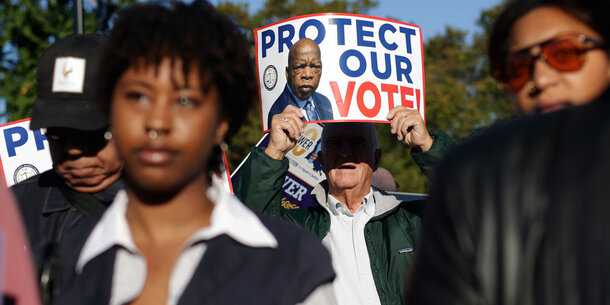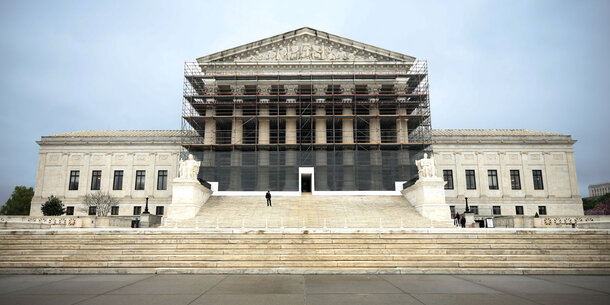This fall, congressional districts around the country will be redrawn based on the 2020 Census. With the For the People Act, Congress has a once-in-a-decade chance to replace a murky and abuse-prone process with one that is fair, transparent, and inclusive.
The bill, which was passed by the House this month and will soon be introduced in the Senate, would strengthen protections for communities of color and ban partisan gerrymandering. It would also enhance the ability of voters to challenge racially or politically discriminatory maps in court, require meaningful transparency in the map-drawing process, and mandate the use of independent commissions to draw maps.
Packaged together in one bill, the reforms are the most significant effort in American history to rein in gerrymandering and other abuses that have long plagued congressional redistricting. But with the start of redistricting nearing, the window for Congress to act is closing.
A robust ban to stop partisan gerrymandering
Last decade saw some the most aggressive partisan gerrymandering in U.S. history. Democrats gerrymandered where they could, but Republican success in the 2010 midterms gave them control of the process in far more states — and they used it, gerrymandering to create a net bonus of 16 to 17 seats in the House.
Without reform, this decade could be even worse. The Supreme Court’s 2019 ruling that partisan gerrymandering does not violate the Constitution means that would-be gerrymanderers now have license to use new mapping technology and powerful analytics about voters to create even more durable and pernicious gerrymanders. And as historically has been the case, much of this gerrymandering invariably will target communities of color.
The For the People Act responds by barring maps that have the intent or effect of giving a party an undue statewide advantage. To measure effect, the For the People Act sets out an easily applied two-part statistical test. If a map fails the test, it must be redrawn, regardless of intent. Inclusion of this straightforward test means that it will it be easier to identify bad maps and that biased maps can more quickly be thrown out by courts.
Strengthened protections for communities of color
In addition to banning partisan gerrymandering, the For the People Act would add two other important protections for the nation’s fast-growing communities of color. The first is protection for districts where a community of color has shown a consistent ability to elect its preferred candidates, even if the district is not a majority-minority district as required by the Voting Rights Act. The second is a requirement that when drawing maps, states strive, as much as possible, to keep towns, neighborhoods, and other geographic areas where people have shared identities or common interests together in same district.
Both protections will be important as people of color increasingly move from cities to more diverse, multiracial communities in the nation’s suburbs and exurbs, where current law provides few meaningful protections against naked efforts to undercut their growing political power.
Greater transparency
Redistricting, by design, has long been a murky and closed-door process. In 2011, for example, Republicans who controlled the map drawing process in Pennsylvania did not publicly release their proposed congressional map until the morning of the day the bill was to be voted on in the state senate, giving Democrats and the public just hours to review and respond to it. By the time it was apparent that the map created an egregious 13–5 Republican gerrymander, the vote was over.
The For the People Act would ban such hide-the-ball tactics. States would be required to make the data used to draw maps publicly available and to propose and solicit comments on preliminary maps before proposing a final map. There then would be a further comment period and additional hearings before a vote to approve a final map could be held.
Streamlined litigation
Courts are often a key to fair maps. But litigation delays mean it frequently takes years to win better maps. Last decade, for example, a court in Texas took nearly three years to rule that the state’s congressional map was racially discriminatory. States, indeed, often intentionally drag out litigation, knowing that they can keep using discriminatory maps in the meantime.
The For the People Act would change this dynamic in several ways. First, it would require courts, including the Supreme Court, to prioritize redistricting litigation. And, if litigation cannot be fully resolved ahead of an election, the bill would empower a court to put interim maps in place to address clearly proven, blatant violations.
The For the People Act also would speed up redistricting litigation, including Voting Rights Act cases, by superseding legislative rules that states commonly use to try to bar disclosure of backroom discussions about maps.
Last but not least, if a court strikes down a map, the For the People Act would require it to proceed with development of a replacement while an appeal proceeds so that a fair map is ready to go for upcoming elections once the appeal is decided.
Independent commissions
The For the People Act would require that states use independent commissions to draw congressional maps. Modelled after successful state reforms, these commissions would remove partisan lawmakers from the process and replace them with citizen commissioners selected through a rigorous screening process designed to ensure that commissioners are well-qualified and diverse. In contrast to the current practice in most states, maps could no longer be approved along party lines. Instead, a map would need to win support from Democrats, Republicans, and independent or third-party members of the commission in order to be adopted.
At present, the For the People Act provides that these commissions will go into effect for the upcoming round of redistricting. Whether that is feasible will depend on when the Senate takes up and passes the bill. But even if there isn’t enough time to implement commissions for this cycle of redistricting, the rest of the reforms can, and should, be made effective immediately. Indeed, with Americans on the precipice of what could be some of the worst gerrymandering in our history, the For the People Act could not be more urgently needed.



